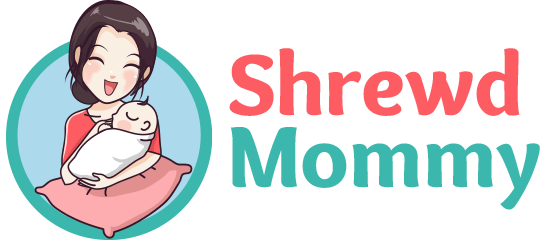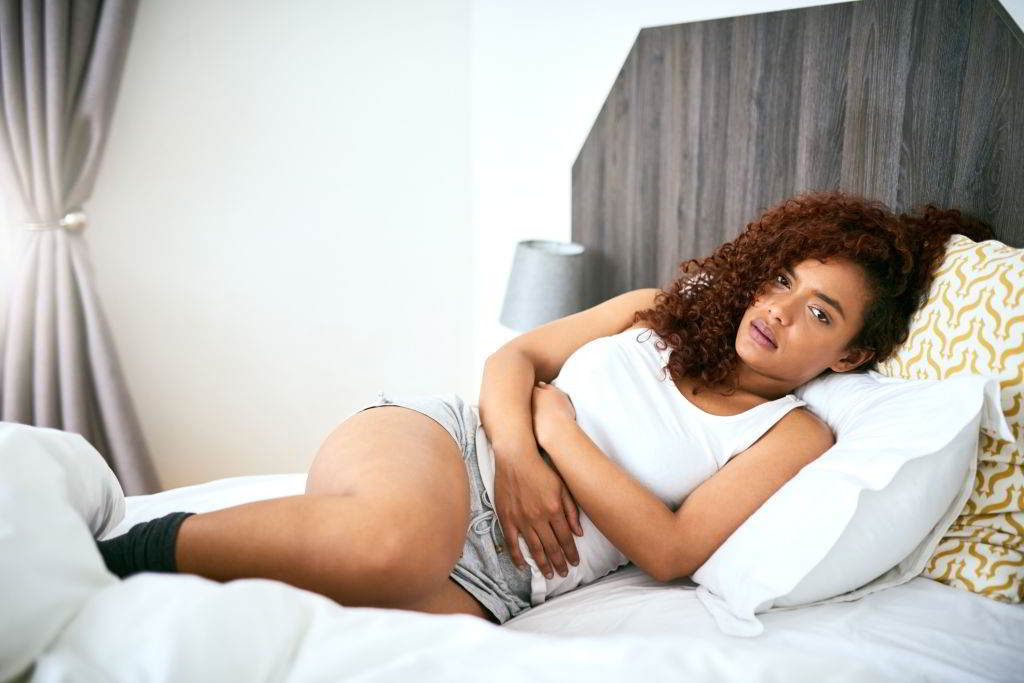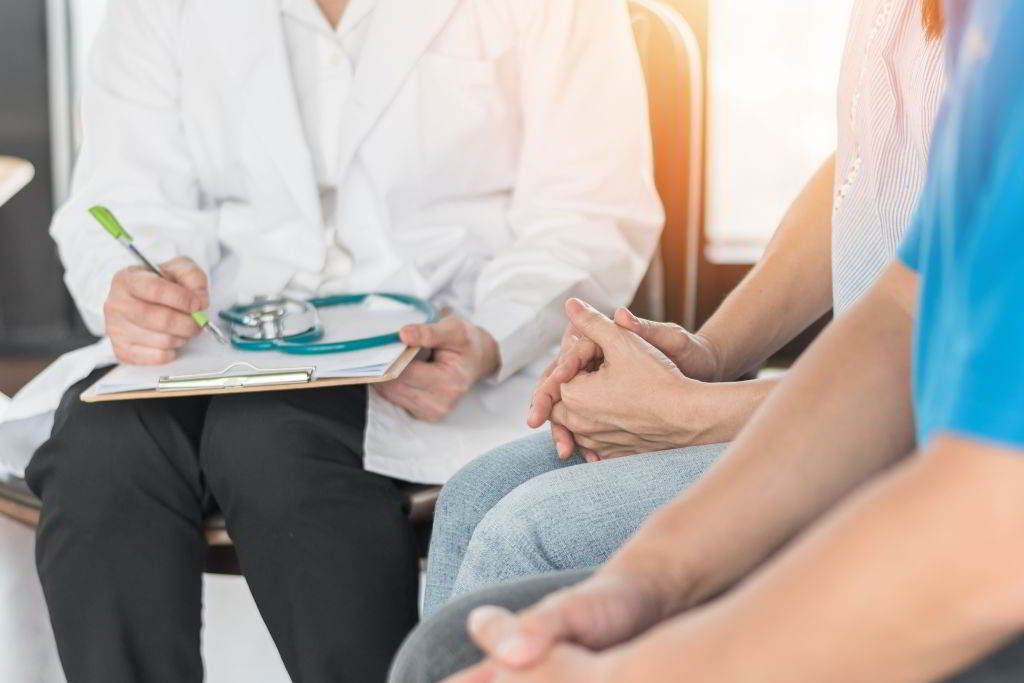Cramping is a premenstrual symptom and as well as a sign of pregnancy. Most women experience this kind of pain, but how do you know if cramping after ovulation is a sign of pregnancy? I will tell you in this tutorial about cramping and another couple of things about this symptom.
What is Ovulation?
Ovulation is the process where an egg or ovum is released by a matured ovarian follicle and is moving to the fallopian tube for its fertilization. Ovulation happens midway during your menstrual cycle and usually lasts for one or more days.
During the whole process, it’s normal for women to experience cramping during or before the process. Pain on lower or side abdominal pain is usually felt.
The release of an ovum normally takes a moment. The ovum’s lifespan is not more than 24 hours. However, a woman has the possibility of getting pregnant for u to 5th day during ovulation time because the sperm has a longer life span.
Normally, in 5 women there is at least 1 who experiences pain and cramping after ovulation. The pain could either be s a sharp pain to dull ache (mild pain), a minor pinch or a twinge that will likely last for a moment. There is also a slight cramping which is usually felt on one side of the abdomen. This cramping occurs midway in the menstrual cycle and lasts either for just a short time or longer.
This cramping can continue during the ovulation process or even after. The experience will differ from one person to another. Most of the time, cramping after ovulation is severe and you will sometimes feel nauseated.
How to Deal with Cramping after Ovulation
Mild cramps can be ignored, but if it makes you uncomfortable there are remedies that you can do to ease the pain. For example, you can do the following:
Step 1. Anti-inflammatory Drugs
These are the initial treatments for cramps and other menstruation-related problems. However, the pain relievers should be checked by your doctor first to check if it should be taken or not.
Step 2. Eat More Foods with Fiber
Fiber will help the stool bulkier and softer, so your body can secrete it easily. You should consume at least 25 to 30 grams of fiber each day and this should come from real foods and not just dietary supplements.
These foods can be corn, avocado, raspberries. Beans, popcorn, pears, peas, oatmeal, brown rice and broccoli.
You should limit meat foods.
Step 3. Keep yourself Hydrated
Drinking fluids will avoid constipation and it also helps in excreting the wastes in your body. Drink vegetable and drink juices, smoothies, herbal teas and clear soups.
Step 4. Take Dietary Supplements
There are studies that suggest that certain minerals and vitamins could be effective in reducing the cramps you feel if it’s that worse. Some of those supplements are vitamin D, calcium, and omega-3 fatty acids. It will help you relieve your cramping. Be careful if you are using Tums. Again, when it comes to dietary supplements you should consult with a doctor.
Cramping After Ovulation, Why Severe or Mild?
There are no definite theories on why the woman experiences cramps after ovulation, but there are possible reasons why. Take note of the following causes.
1. The Ovary Surface Stretches
One of the first possible causes of ovulation cramps during or after the process is the stretching of the ovary surface. The hormones your body produces often make the ovary produce 20 follicles every immature egg.
So it is believed that cramping after ovulation is caused by the expanding follicle which stretches the ovary’s membrane.
2. Follicle Ruptures and the Ovary Wall Breaks
To be able to be released, the matured ovum has to burst from the follicle. This process will cause mild bleeding. When the follicle ruptures, the ovum forces itself to break through the ovary’s walls, so we women will end up with lower abdominal cramps.
3. Blood Release During Follicle Rupturing
When we are ovulating, some blood, the ovum and some fluid is released from the ovary when it raptures. It is believed that blood or fluid irritates the abdominal cavity’s lining and thus it causes pain. This is supported by some discharge that contains little blood on it.
4. Fallopian Tube and Uterus Spasms
Cramping after ovulation is a result of fallopian tube spasms. The spasms forces the ovum from the fallopian tube for implantation or it awaits disintegration to be shed off during the monthly cycle that will follow.
5. Post Ovulation Constipation
Seven to ten days after ovulation, 2% of women often experience constipation or slow bowel movement. This is triggered by the rise of progesterone hormone.
Constipation is also responsible for cramping after ovulation or lower abdominal pain and aches. These are also common pregnancy symptoms too.
You can avoid constipation by drinking a lot of water and eating regular meals with a fiber content.
Cramping Days after Ovulation
1. Cramping 1 Day After Ovulation
Cramping after ovulation, the cramp pain a day or two after ovulation is normal. The abdominal pain usually lasts for several hours. The reasons for this are already discussed about.
2. Cramping 2 Days
As what I’ve said, it is normal to experience cramps 1 or 2 days after ovulation. According to healcure.org, there is about 7% of women who experience cramps on the 2nd day after ovulation.
3. Cramping 3 Days
The question is, after 3 days of ovulation is it normal to have cramps, or is this a sign of pregnancy? Cramping 3 days past ovulation is not yet a sign that you are pregnant, because implantation cramping can happen later.
There is approximately 9% of women experience cramps and pains on the 3rd day after ovulation, and 6% of them are pregnant.
We all have physiological differences, and it is generally normal to experience cramping to go past 2 days to the 3rd day but the pain is clearing up.
4. Cramping 4 Days
Cramping and abdominal pain 4 days after ovulation with blood in stool, vomiting, feeling dizzy, increased pain, painful urination, high fever, difficulty in breathing and swollen abdomen will require you to see a doctor immediately.
Approximate 10% of women experience cramps and pains after 4 days past ovulation, and 6.5% of them are pregnant.
5. Cramping 5 Days
Feeling pain and cramps 5 days after ovulation is an indication of early implantation or another underlying problem.
6. Cramping 6 Days
Implantation cramps could be felt 6 days after ovulation. According to healcure.org 15% of women who experience pain and cramp 6 DPO, there are 10% who are pregnant.
Cramping after Ovulation, a Sign of Pregnancy?
Cramps are not just symptoms of the premenstrual syndrome but of pregnancy too. It usually happens some few days after conception or fertilization. At the time of ovulation, one is really likely to be pregnant.
Many women will assume that these cramps are PMs Signs but these could be pregnancy signs. How to tell it?
You will experience symptoms like breast tenderness, spotting because of implantation bleeding, fatigue, backache and bloating. There is a white discharge because of the cells increase as the vagina’s wall thickens.
The things that I mentioned about cramping after ovulation are necessary for you to understand the cramps you are feeling. Again, it could either be a normal premenstrual symptom or an indication like pregnancy, or something else. You should make yourselves aware that cramps could be normal to other women, but not to you.
Again, if the cramps are not that painful you can try the remedies I gave you. But if makes you uncomfortable, ask your doctor and have yourself checked.
If you like this tutorial, please let me know. Ask questions and give suggestions in the comment box below. Thank you for reading!




Pingback: Is Nausea A Sign Of Labor? How to Tell If It Really Is? - ShrewdMommy
Pingback: The Truth About 6 DPO Symptoms You Need To Know - ShrewdMommy
Pingback: What Is 1 Cm Dilated And What To Do With It? - ShrewdMommy
Pingback: A List Of The Top Ten 7 DPO Symptoms To Watch Out For - ShrewdMommy